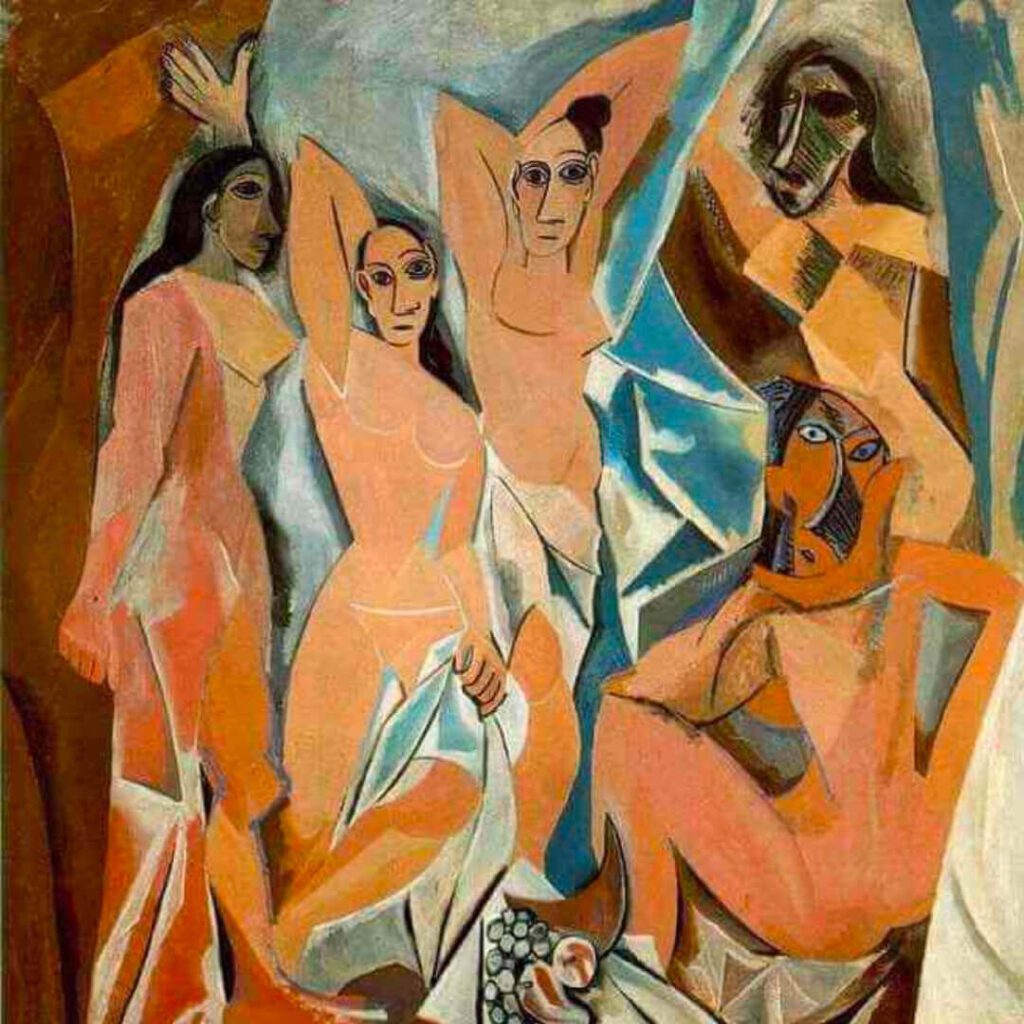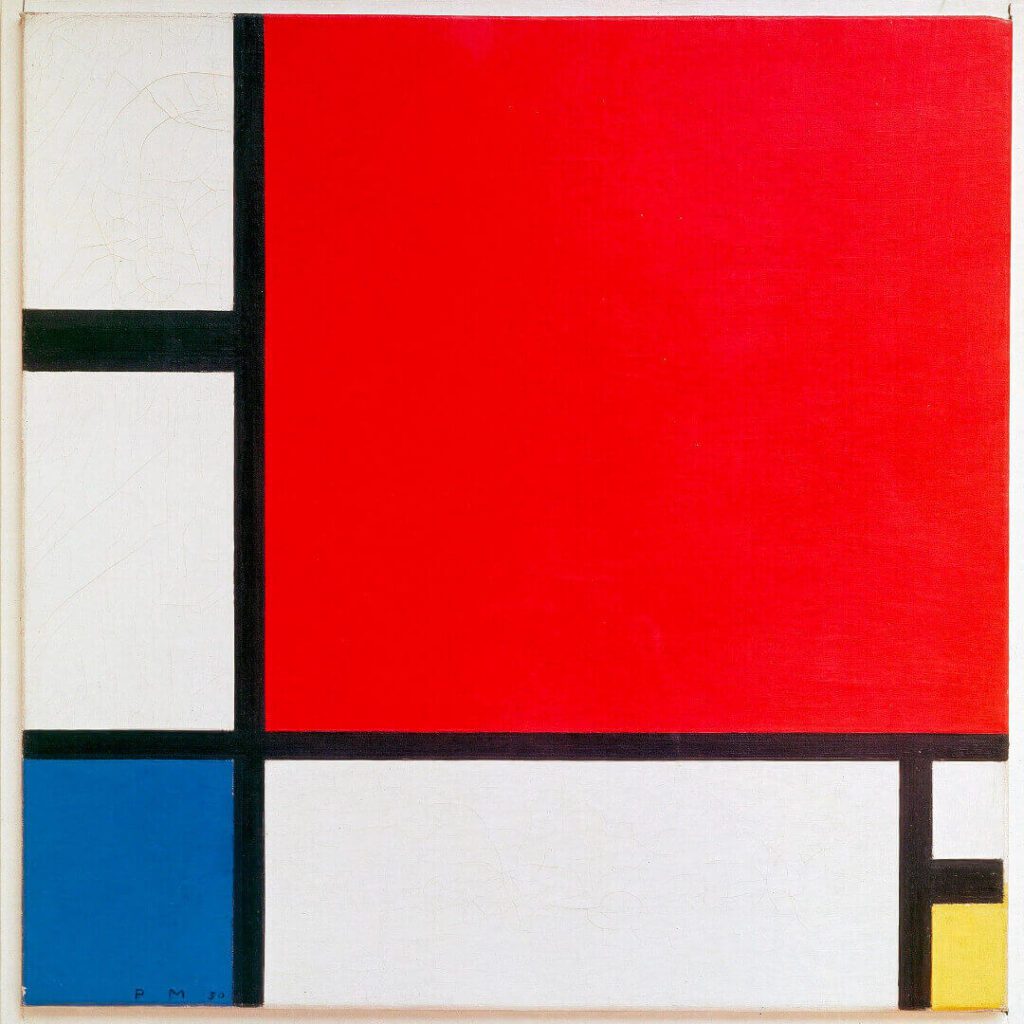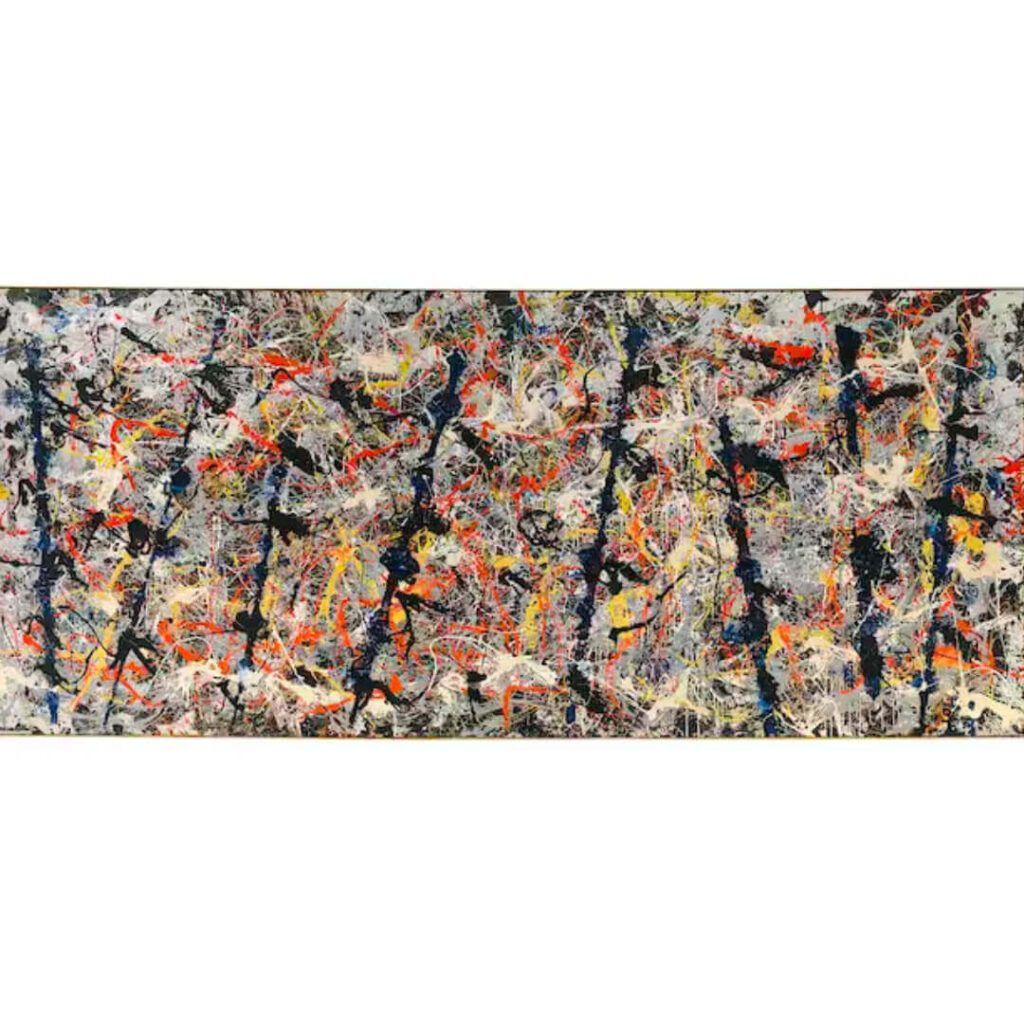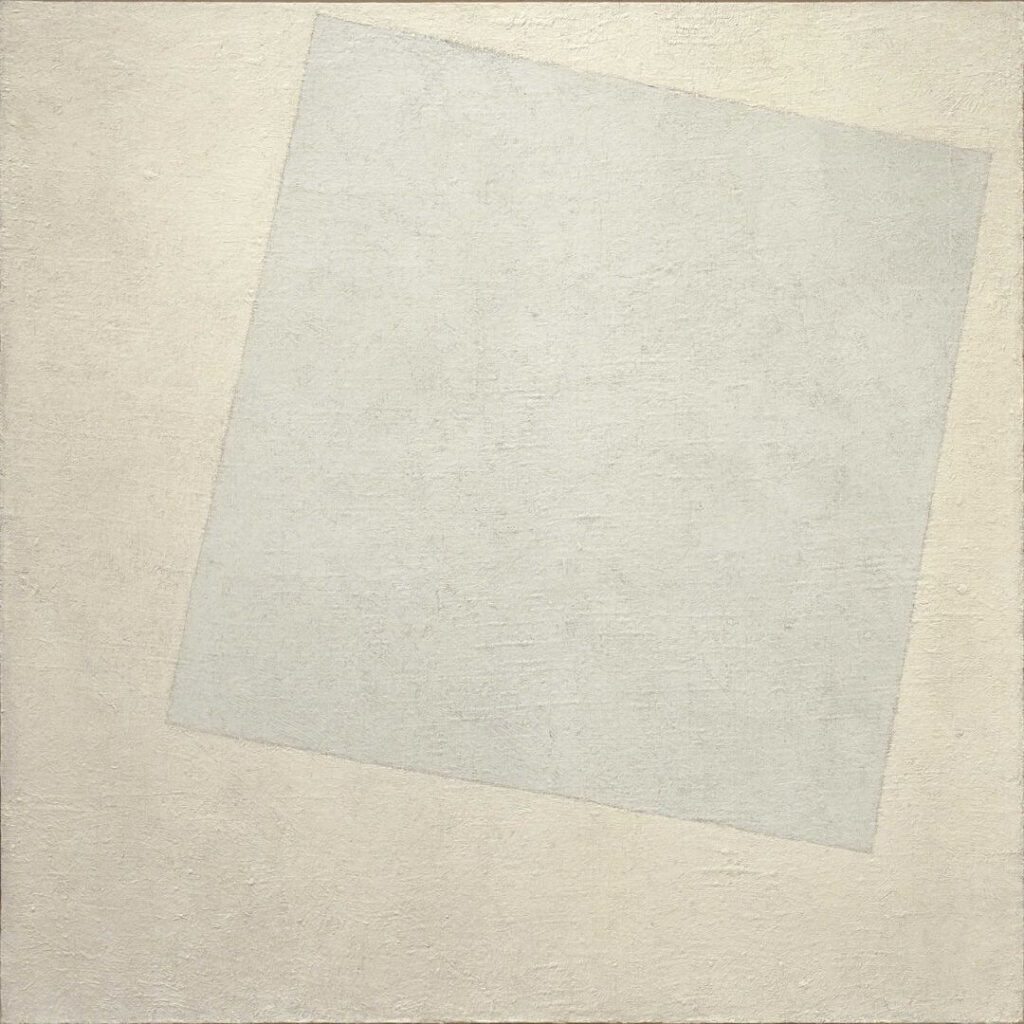Art is an ever-evolving form of creative expression that has existed for thousands of years. Art has taken many forms throughout history, and artists have experimented with various styles and techniques.
One such style that has gained immense popularity in the modern era is abstraction. Abstraction in art refers to distorting, simplifying, or exaggerating the natural forms and shapes found in the real world. This art style seeks to communicate emotions and ideas through color, texture, and form rather than realistically representing objects or figures. At its core, abstraction in art is about breaking away from traditional forms and creating something entirely new and unique. By doing so, artists can explore new techniques and ideas and push the boundaries of what is possible within the art world.
Table of Contents
- Defining Abstraction In Art
- Top 10 Abstraction Works Of Art
- “Composition VIII” by Wassily Kandinsky – 1923
- “Les Demoiselles d’Avignon” by Pablo Picasso – 1907
- “No. 61 (Rust and Blue)” by Mark Rothko – 1953
- “Black, and White” by Ellsworth Kelly – 1951
- “Red, Yellow, and Blue” by Piet Mondrian – 1930
- “Blue Poles” by Jackson Pollock – 1952
- “White on White” by Kazimir Malevich – 1918
- “Woman I” by Willem de Kooning – 1950-1952
- “Number 14” by Jackson Pollock – 1948
- “Homage to the Square” by Josef Albers – 1950s to 1970s series
- Why Abstraction Matters In Art?
- Frequently Asked Questions
- Related Questions
Defining Abstraction In Art
The term abstraction in art can be somewhat tricky to define. Some might associate it with specific movements, such as abstract expressionism or cubism. In contrast, others might see it as a more general term encompassing a wide range of artistic styles.
However, when it comes down to it, abstraction in art is about taking something that exists in the real world and distorting or simplifying it to create something new. This could involve simplifying a form to its basic shapes and colors or exaggerating certain features to create a more impactful piece.
One way to think about abstraction in art is to compare it to photography. In a photograph, the goal is typically to represent the subject matter accurately.
However, in abstraction, the goal is to transform that subject matter into something entirely new and unique. In other words, to create an abstract or abstraction from the original object.
The idea of abstraction has been around for centuries, with early examples of abstract art dating back to ancient civilizations such as the Egyptians and the Greeks. However, it wasn’t until the 20th century that abstraction emerged as a distinct art style.
Top 10 Abstraction Works Of Art
Countless works of art have been created over the years that could be classified as abstract. However, some pieces stand out as particularly notable examples of the style. Here are 10 of the top abstract works of art ever created:
- “Composition VIII” by Wassily Kandinsky – 1923
- Les Demoiselles d’Avignon” by Pablo Picasso – 1907
- “No. 61 (Rust and Blue)” by Mark Rothko – 1953
- “Black, White, and Gray” by Ellsworth Kelly – 1951
- “Red, Yellow, and Blue” by Piet Mondrian – 1930
- Blue Poles” by Jackson Pollock – 1952
- “White on White” by Kazimir Malevich – 1918
- Woman I” by Willem de Kooning – 1950-1952
- Number 14″ by Jackson Pollock – 1948
- “Homage to the Square” by Josef Albers – 1950s-1970s (series
“Composition VIII” by Wassily Kandinsky – 1923

This piece is often seen as one of the most important examples of abstract art ever created. It features a series of overlapping shapes and colors that create a sense of movement and energy.
“Les Demoiselles d’Avignon” by Pablo Picasso – 1907

While not a strictly abstract piece, this painting is often seen as a precursor to the abstract movement. It features distorted figures and shapes that are somewhat removed from reality.
“No. 61 (Rust and Blue)” by Mark Rothko – 1953

This painting features two large blocks of color that blend in the center. The colors are meant to evoke feelings of depth and emotion.
“Black, and White” by Ellsworth Kelly – 1951

This piece is made up of black and white blocks on a canvas. The simplicity of the design is meant to highlight the beauty of the individual colors.
“Red, Yellow, and Blue” by Piet Mondrian – 1930

This painting features a grid of rectangles filled in with different colors. The design is meant to be simple and geometric, focusing on color and form.
“Blue Poles” by Jackson Pollock – 1952

This painting is a prime example of the abstract expressionist movement. It features a series of dripping, swirling lines that create a sense of movement and chaos.
“White on White” by Kazimir Malevich – 1918

This painting features a simple white square set against a white background. The simplicity of the design is meant to highlight the idea that art can be about more than just representation.
“Woman I” by Willem de Kooning – 1950-1952

This painting features a distorted, abstract figure of a woman. The brushstrokes and colors are meant to evoke a sense of energy and emotion.
“Number 14” by Jackson Pollock – 1948

Another example of abstract expressionism, this painting features a series of dripped and splattered lines in various colors. The chaotic design is meant to evoke feelings of movement and energy.
“Homage to the Square” by Josef Albers – 1950s to 1970s series

These paintings all feature a series of nested squares of different colors. The simplicity of the design is meant to highlight how colors can interact with one another.
These 10 pieces represent just a small selection of the incredible works of art created within the realm of abstraction. Each is unique, but they all share a common thread of pushing the boundaries of what is possible within the art world.
Why Abstraction Matters In Art?
There are a few key reasons why this art style has become so popular in recent years. And why abstraction in art continues to matter.
Abstraction Allows Artists To Express Themselves
One of the biggest reasons is that abstraction allows artists to express themselves in new and unique ways. By breaking away from traditional forms and styles, artists can create something entirely their own.
This can be incredibly freeing and allows for creative expression that might not be possible within more restrictive art styles.
Abstraction Has The Power To Evoke Emotion And Feeling In Art
Another reason abstraction matters is that it can evoke emotion and feel in a way that traditional art might not. Because an abstraction is not focused on representation, it allows for a more open-ended interpretation.
This can be incredibly powerful, as viewers can project their emotions and experiences onto the piece.
Abstraction Allows For Experimentation
Abstraction matters because it represents a constant evolution and experimentation within the art world. Abstraction has paved the way for new styles and movements within the art world by pushing the boundaries of what is possible.
This helps to keep art fresh and exciting and ensures that it will continue to evolve for years to come.
Abstraction in art is a fascinating and essential style that has significantly impacted the art world. Artists can create something unique and expressive by distorting, simplifying, and exaggerating natural forms and shapes.
Whether through color, form, or texture, abstraction allows for creativity and experimentation unparalleled in other art forms. And with countless notable works of art created within this style, it’s clear that abstraction will continue to play an essential role in the world of art for years to come.
Frequently Asked Questions
What is abstraction in art?
Abstraction in art is a style that involves distorting, simplifying, or exaggerating natural forms and shapes found in the real world. It focuses on conveying emotions and ideas through color, texture, and form rather than realistic representation.
How does abstraction differ from realistic art?
Unlike realistic art, abstraction does not aim to faithfully represent objects or figures. Instead, it emphasizes the use of non-representational elements to convey concepts, emotions, or experiences.
What are the key characteristics of abstract art?
Key characteristics of abstract art include the use of non-representational forms, emphasis on color, texture, and form, and a departure from traditional, realistic depictions.
What motivated artists to embrace abstraction?
Artists embraced abstraction as a means of breaking away from conventional forms, allowing them to explore new techniques and ideas. It provided a platform for artistic freedom and expression beyond the constraints of realistic representation.
How does abstraction contribute to artistic expression?
Abstraction allows artists to express themselves more freely by relying on the visual language of color, shape, and form. It provides a unique avenue for conveying emotions, thoughts, and ideas without being confined to literal representation.
Are there different types of abstraction in art?
Yes, there are various forms of abstraction, including geometric abstraction, lyrical abstraction, and abstract expressionism. Each type explores different ways of distorting or simplifying reality.
Can anyone appreciate abstract art, or is it reserved for art enthusiasts?
While personal preferences vary, abstract art is open to interpretation and can be appreciated by anyone. It invites viewers to engage with the artwork on a more personal and subjective level, allowing for diverse perspectives.
How do artists choose the elements of color, texture, and form in abstract art?
Artists often choose elements based on their emotional or conceptual intent. Color, texture, and form are selected to evoke specific feelings or communicate abstract ideas, contributing to the overall impact of the artwork.
Is there a historical context to the development of abstract art?
Yes, abstract art emerged in the early 20th century as artists sought to move away from representational traditions. Influenced by societal changes and new philosophical ideas, abstraction became a pivotal movement in modern art.
Can abstraction be found in other art forms, such as literature or music?
Yes, the concept of abstraction extends beyond visual arts and can be observed in literature, music, and other creative disciplines. In each case, it involves a departure from literal representation in favor of conveying ideas or emotions in a more abstract manner.
Anita Louise Art is dedicated to art education, great artists, and inspiring others to find and create their art. We love art that uplifts and inspires. #ArtToMakeYouSmile! #ArtToMakeYouHappy!
If you are interested to see any of my art, you can find out more by clicking here. If you are interested in what inspires me and my paintings, you can discover more by clicking here.
We have a free newsletter and would love you to be part of our community; you can subscribe to the newsletter by clicking here. I would be happy to talk to you if you have any questions. You can reach me, Anita, by clicking here.
Subscribe to our Anita Louise Art YouTube Channel with great videos and information by clicking here.
Join us for our podcast “5 Minutes With Art.” Spend just 5 minutes a week with us to discover and learn about great art and artists. You can find out more about our podcast by clicking here.
Related Questions
What Is The Cultural Significance Of Abstract Expressionism Art?
The cultural significance of abstract expressionism art is that it was a forerunner for the cultural changes in the United States in the 1950s and 1960s. The Abstract Expressionism movement started after World War II in the 1940s and continued into the 1950s. The world saw significant cultural shifts in the 1950s and the 1960s.
By clicking here, you can learn more by reading What The Cultural Significance Of Abstract Expressionism Art Is?.
What Is Abstract Expressionism?
Abstract Expressionism is a term applied to the art developed by American painters in the 1940s and 50s. It is associated with the New York School art movement, which signified a change in the world’s art center from Paris, France, to New York City. Gestural brushstrokes characterize the abstract expressionism art movement, mark markings, and the overall impression of spontaneity in the artwork.
You can learn more by reading the blog What Is Abstract Expressionism? by clicking here.
Why Is Van Gogh Considered Such a Great Artist?
Many things make Vincent Van Gogh unique and great as an artist. He had a great way of using color in his heart, but more than that, he was an artist who set and paved the way, and his brushstroke technique used color and his design ability. What is interesting is that he did this as a self-taught artist.
By clicking here, you can discover more by reading Why Is Van Gogh Considered Such a Great Artist?

